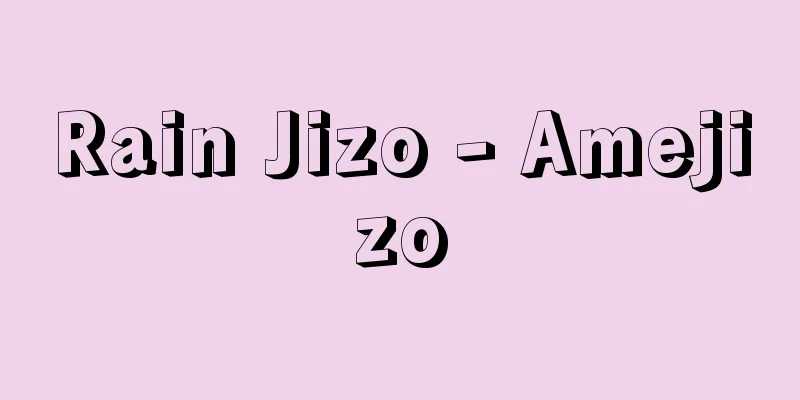dragon boat

|
An annual dragon boat race held in the Nagasaki region. It appears to have been held as early as the mid-17th century, but its origins are said to have been modeled on the Boy's Day event held by Chinese people living in Nagasaki at the time. By the end of the 18th century, the event had become so popular that 36 towns around Nagasaki would compete with each other, each with their own flag on their boat. The enthusiasm was so intense that many fights were fought, and it was even banned after a fatality. In the past, the event was held around the Boy's Day of the lunar calendar, but in recent years, there has been no particular focus on the timing, and in Nagasaki, it is held on the fourth Sunday of July (the last day of the Nagasaki Port Festival), and on the islands of Nishisonogi Town in early July and during the Obon period. In particular, the Dragon Boat Race held within Nagasaki Port has been held since 1977 as a championship in which selected teams from each district of the prefecture, divided into three categories - general, workplace, and junior high school students - and special participation teams from outside the prefecture compete for speed on a 1,300m course within the harbor, and the winning team goes on to international competitions in Hong Kong and other places. The name of this boat race, Dragon Boat Race, is considered to be an adaptation of the Dragon Boat Races held in central and southern China during the Dragon Boat Festival, as the pronunciation of the word "dragon" in Hokkien is similar to that of the word "pe-ling," and similar boat races held throughout Okinawa are called "hari," which is thought to be a phonetic pronunciation of the word "dragon." The boats used for Pelon are slender Japanese boats about 14 meters long that have little resistance in the water, and on board are about 30 rowers with 1-meter oars, as well as a leader, helmsman, drum and gong players, and aka (a person who collects water from the boat). The rowers face the direction of travel and paddle the water from front to back, adjusting the timing and pitch of the oars to the sound of the gongs and drums. In addition to the gongs and drums that are loaded onto the boat, sacred offerings, flags, and long swords may also be attached to the central pillar. → Related topics Nagasaki [city] Source : Heibonsha Encyclopedia About MyPedia Information |
|
長崎地方で行われる(竜)舟競争の年中行事。17世紀の中ごろにはすでに行われていたようであるが,その起源は,当時長崎に居住していた中国人の行う端午節の行事を見習ったものといわれる。18世紀末には長崎近辺の36の町が,それぞれの旗印を舟に立てて競い合うほど盛んに行われた。熱狂のあまりのいさかいも多かったようで,死者が出たことによって禁止令が出されたことさえあった。かつては旧暦の端午節前後に開催されていたが,近年は開催時期にそうしたこだわりはなく,長崎では7月の第4日曜日(ながさきみなとまつり最終日),西彼杵(にしそのぎ)町の島々では7月上旬や旧盆の時期に行われている。とりわけ長崎港内で行われるペーロンは,1977年から一般,職域,中学生の3部門にわけられた県内各地区の選抜チームと県外の特別参加チームが,港内約1300mのコースでその速さを競う選手権大会とされており,優勝チームは香港などで行われる国際大会にも出場している。 ペーロンというこの舟競争の呼び名が,福建語の爬竜の発音pe-lingに近いことや,沖縄各地で行われているこれと同種の舟競争が,爬竜を音読したと思われるハーリーと呼ばれていることからも,中国の華中,華南一帯で行われていた端午節の竜舟競渡(きょうと)(ドラゴンボート・レース)が受容されたものとみなされている。 ペーロンに使われる舟は水の抵抗が少ない細身の約14mの和船で,これに1mほどの櫂(かい)を持った漕(こ)ぎ手の30名前後に加えて,指揮者,舵(かじ)取り,太鼓・銅鑼(どら)打ち,アカ(舟内の水)とりなどが乗り込む。漕法は漕ぎ手が進行方向を向き,前から後ろに水を掻(か)くというもので,銅鑼と太鼓の音によって櫂を操るタイミングやピッチが調整される。舟にはこうした銅鑼や太鼓が積み込まれるほか,中央の柱には御幣や旗,長刀などが取り付けられることもある。 →関連項目長崎[市] 出典 株式会社平凡社百科事典マイペディアについて 情報 |
<<: Herondas - Herondas (English spelling)
Recommend
The current situation of the twenty-year-old mystery - nijuunenmokuto no kaigenjo (English)
A colloquial, episodic novel from the late Qing Dy...
Feldebrö (English spelling) Feldebro
…Official name = Republic of HungaryMagyar Köztár...
Heinrich III der Erlauchte (English spelling) Heinrich III der Erlauchte
...The Wettin family first established a strong b...
Kitabatake clan
A nobleman during the Kamakura and Nanboku-cho pe...
Cosmic Horizon - Uchu no Chiheisen (English spelling) cosmic horizon
The horizon is the theoretical limit of what can b...
Don Diego de Vega (English spelling)
…In Japan, he is known as the “Kaiketsu Zoro.” Hi...
Calf - Koushi
A small cow (formerly called "kouji"), o...
Shirokawa [town] - Shirokawa
A former town in Higashiuwa District, southern Ehi...
Arzachel
…He also discussed the Trepidatio theory (the ver...
Abū Nuwās (English spelling)
747 to 762 - 810 to 813 The greatest poet of the A...
Gradualism - gradualism
It refers to ideas and actions based on a method o...
Lithophaga lithophaga (English spelling) Lithophagalithophaga
…[Tadashige Nabe]. . … *Some of the terminology t...
Foolish Wives
American film. Produced in 1922. This was the thir...
semik
…Pagan deities survived in the form of associatio...
Capricorn - Capricorn
〘Noun〙① A line of latitude on Earth that is 23 deg...









